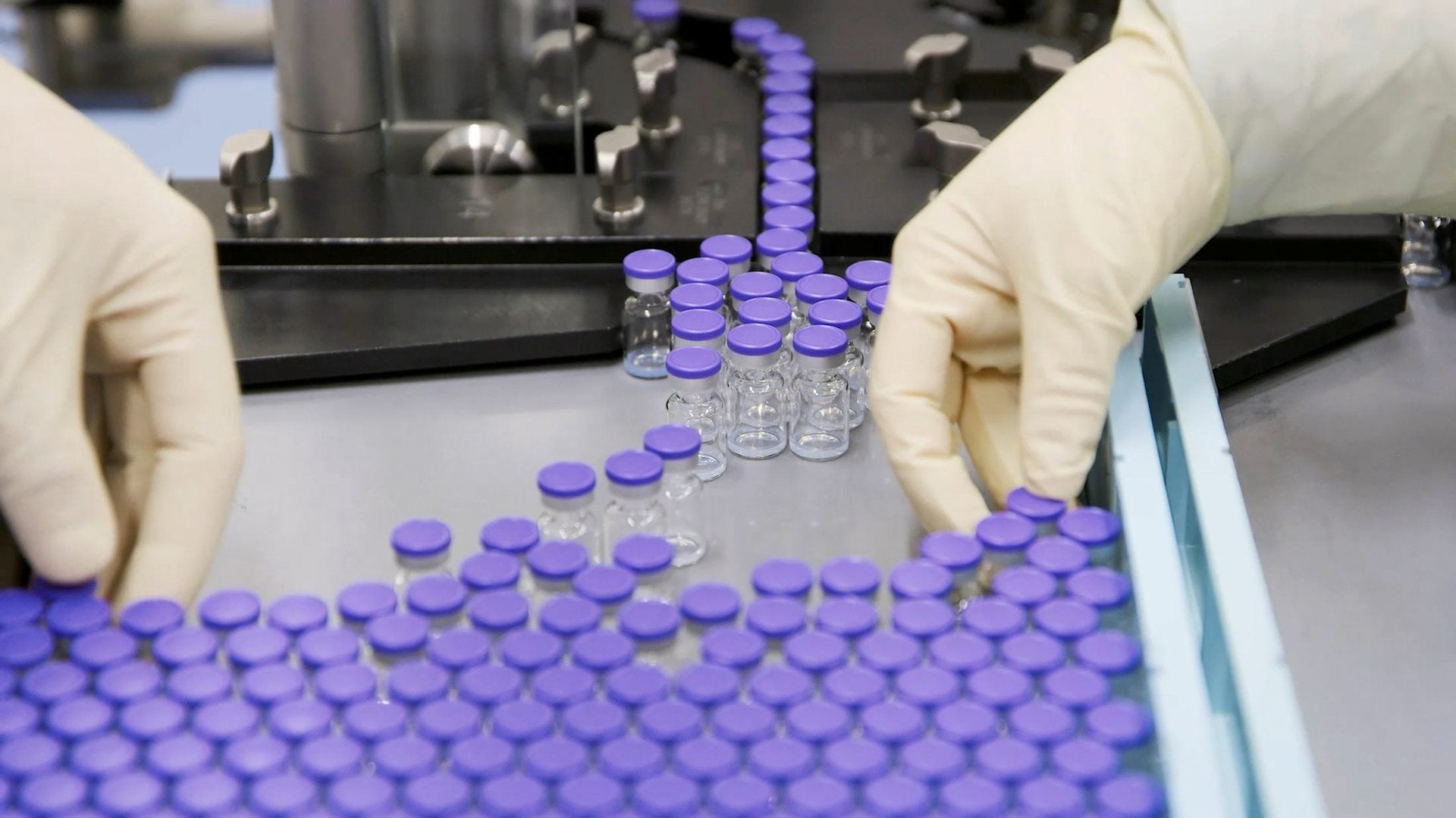The metric that will determine the real winner of the Covid-19 vaccine race
Early on Nov. 18, Pfizer announced the completion of the primary safety and efficacy goals of the third phase of its Covid-19 vaccine clinical trials, and the data are promising: It looks like the two-dose shot prevented 95% of Covid-19 cases. Pfizer, which ran the trial, and BioNTech, which developed the candidate, will file to the US Food and Drug Administration (FDA) for emergency use authorization in the coming days.


Early on Nov. 18, Pfizer announced the completion of the primary safety and efficacy goals of the third phase of its Covid-19 vaccine clinical trials, and the data are promising: It looks like the two-dose shot prevented 95% of Covid-19 cases. Pfizer, which ran the trial, and BioNTech, which developed the candidate, will file to the US Food and Drug Administration (FDA) for emergency use authorization in the coming days.
The race to distribute the first Covid-19 vaccine in the US is getting spicy: Pfizer’s announcement comes just days after the Massachusetts-based drug company Moderna announced that early data from its late-stage vaccine trial showed 94% efficacy. And UK-based AstraZeneca, which has teamed up with the University of Oxford, is expected to release some of its own phase three data later this week.
But in reality, being first doesn’t mean winning big: The real Covid-19 vaccine victor will be the one that has the greatest benefits for the widest set of recipients—including the most vulnerable populations. And that race’s winners are far from decided.
At this point, we don’t have full clinical trial data for Pfizer’s or Moderna’s vaccine candidates; all that’s available are press releases from the two companies, which are hardly the same caliber of evidence as peer-reviewed scientific papers. (Both companies have stated that they eventually plan to publish their results in peer-reviewed journals.) But according to the available evidence, there’s reason to believe that these two candidates could be safe and effective for some of the populations at the highest risk of severe Covid-19 cases, including the elderly.
Roughly 80% of Covid-19 deaths in the US have been in adults who are 65 or older. This is partly because older adults are more likely to have pre-existing conditions. But it’s also because older adults’ immune systems are fundamentally different from younger adults.
As Quartz has previously reported, older adults tend to have more active innate immune systems and less active adaptive immune systems. Their bodies often fight off infections with more generalized inflammatory body slams rather than specialized immune responses via antibody production—and those broad responses harm to the rest of the body. That also means it can be tricky to design vaccines that work well for them: Older adults typically have poorer responses to vaccines, and build up fewer antibodies after receiving shots than younger adults.
But in today’s press release, Pfizer stated that its vaccine had an efficacy of 94% in older adults—which would be a big deal if it holds true in the real world, considering the burden of Covid-19 on older adults. Between 41% and 45% of its clinical trial participants were between 56 and 85 years old.
Scientists and healthcare providers have tried all kinds of strategies to improve antibody production from vaccines in older adults, from giving them at specific times of day to prescribing exercise, and even adding chemicals called adjuvants, which boost the body’s immune response to a vaccine. Adding more adjuvants, however, may make side effects worse as they accidentally activate the body’s innate inflammatory response.
But Pfizer’s vaccine is a novel kind of vaccine that uses mRNA (as is Moderna’s). They work differently than other vaccines, providing instructions to the body to make hallmark proteins of viruses, which the body then makes its own defenses against. This process could be why Pfizer’s candidate seems to work with minimal side effects: Only 3.8% of participants who got the vaccine complained of fatigue afterward, and 2% had headaches. Older participants reported them even less frequently. Moderna has not released age-specific data yet, but it has stated that 300 people over 55 participated in its second-phase clinical trial, which is significantly lower than the number of those Pfizer’s trial.
Being able to protect those who are most likely to have severe cases Covid-19 is in the interest of public health and the economy: If we can protect the most vulnerable in society, like the elderly, localities can safely open themselves up for business without putting them at risk. That said, the elderly are not the only demographic at high risk of severe cases. It’s vital that future data from these clinical trials show safety and efficacy among other groups that have been hit disproportionately hard by Covid-19, including people of color, those with pre-existing conditions, and pregnant people. That kind of information will only be available as trials get closer to publishing their final data, and continue collecting data through real-world observational studies.